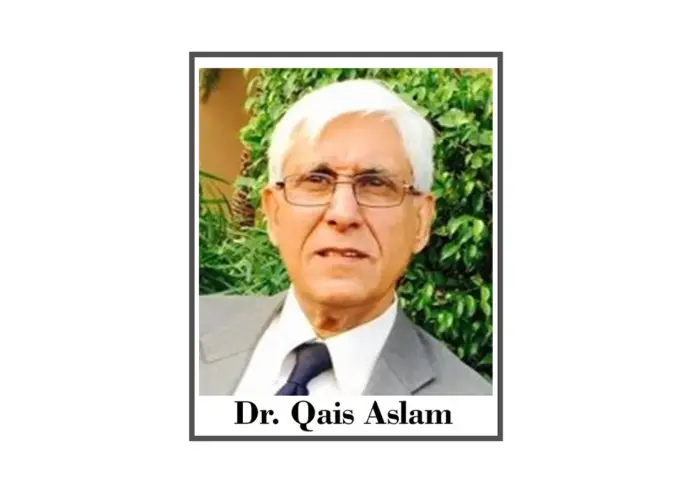SDG Goal 13 (Climate Change and Climate Action), Pakistan is a frontline country that is affected by climate Change and Global warming, although from no fault of its own. Pakistan is among 23 countries which are facing drought emergencies over the past two years (2020-2022). The impact of world warming on Pakistan is that our glaciers are melting at a fast rate creating lakes in the valley below that have devastated the settlements, grazing pastures and agricultural land downhill, forcing villagers to move to higher, but less fertile lands. Melting of glaciers also means less water in the rivers and in the dams. It also means more water every year is falling in the sea creating a sea rise that encroaches on the land forcing villages around the coasts to move inland. Diminishing mangrove forests also do not help the coastal villages from sea erosion and encroachments. Freshwater gets mixed with sea water, resulting in diminished fresh water resources around the coast line. Climate migrants are increasing in the country. The velocity of recent monsoon rain has created an unpresented flood situation in Pakistan. A large part of the country was seriously affected by these floods that left mass destructions in its path. Whole villages (80% houses in Pakistan) were washed away leaving no trace of the settlement behind. More than 3,500 people lost their lives, and 33 million were left homeless. 8,00,000 officially registered internal refugees living in make shift tents. 1,460 health facilities have been affected. Education for 3.5 million children has been interrupted. Tens of thousands of people are affected by diarrhea, malaria, acute respiratory infections, skin and eye infections and typhoid. Croplands were destroyed and would remain underwater for years to come due to lack of governmental support that should have helped mitigate from dangers of floods. Road and bridges and other infrastructure was also swept away.
SDG Goal 14 (Life Below Water), The freshwater fish fauna of Pakistan is represented by a minimum of 193 fish species. Population of some of the species is declining due to habitat loss and degradation, water abstraction, drainage of wetlands, dam construction, pollution and eutrophication. Pakistan’s coastline is about 990 km long, The Exclusive Economic Zone (EEZ) of Pakistan covers an area of about 240,000 sq. km. The maritime zone of Pakistan, including the continental shelf, extends up to 350 nautical miles from the coastline. 90 per cent of industrial effluent and sewage produced in the country’s biggest city is poured into the sea directly. About 550 million gallons per day (MGD) of mostly untreated wastewater is entering the coastal waters affecting the coastal areas), solid waste (approximately 16,000 tons to 18,000 tons of solid waste is generated in Karachi alone). Plastic waste has become a hazard for marine life across the costal belt of the Country. About 2,500 ships and 200 oil tankers visit Karachi harbor through the Manora Channel annually adversely affecting the marine life on our costal belt and the Arabian Sea.
SDG Goal 15 (Life on Land), Pakistan. have a diverse range of forests, from mangroves in the south to pine forests in the north. Only 5.7% of the total land area of Pakistan is covered with forests, but the rate of depletion of the forest cover that’s left continues to be high. Pakistan has some of the w o r l d ‘s rarest animals and plants. Species that thrive in the ecological niches created by thick tree-cover are also likely to become extinct once those protective and nutrient rich surroundings are degraded. One of the issues relating to deforestation as well as desertification and loss of biodiversity is mismanagement and unsustainable use of resources in Pakistan. All are responsible, the Governments from federal, provincial and local levels lack capacity and capability to understand the volume of Challanges as well as mechanism to mitigate and reverse the impact of devastation, the callousness of the profit-hungry private sector towards the environment and biodiversity as well as the general population – the rich and poor alike for not reverting towards sustainable for life living and working practices and behaviors.
SDG Goal 16 (Peace, Justice and Strong Institutions), Pakistan is a classic case where most (if not all) of these subgoals of SDG 17 are not met. In Pakistan, women, religious minorities, and transgender people continue to face violence, discrimination, and persecution, with authorities failing to provide adequate protection or hold perpetrators to account. The government continues to do little to hold law enforcement agencies accountable for torture and other serious abuses. Several Journalists were murdered, others suffered violent attacks and many a people disappeared in the country. Voices were suppressed when media was curbed through different forms of regulations and restrictions. Religious minorities are intimidated by private actors, religious zealots, as well as government actors in open defiance of the Constitution of Pakistan. Violence against women and girls, including rape, murder, acid attacks, domestic violence, and forced marriage, is endemic throughout Pakistan. Roughly 1,000 women are killed in so-called honor killings every year. Child marriages also remain a serious problem in the country. Pakistan has still not enacted a law criminalizing torture. Institutions in Pakistan are inefficient, full of corruption and lack transparency. The rule of Law is missing in Pakistan. Governments of any political party irrespectively fail to complete their respective tenures where not a single prime minister. The judiciary is not seen as independent and is considered to be shielding corrupt political practices from prosecution. Consequently, the army comprises a “state within a state” with increasing power over the economy, foreign policy and domestic allocation of resources. Political parties in Pakistan lack internal democracy, relying on patron-client networks to garner votes, and the judiciary plays a subservient role to the military and political class.
SDG Goal 17 (Partnerships for the Goals), Pakistan’s Public debt has reached Rupees 42.4 trillion (US $ 188.44 Billion) in end of 2022. The World Bank has projected Pakistan’s debt to Gross Domestic Product (GDP) ratio to 90.6% in current fiscal year 2022-2023. Pakistan’s GDP stood at US $ 346.34 billion (or Rs. 78 trillion). Or, Pakistan has only 9.4% (Rs. 7.3 trillion or US $ 32.55 billion) of its GDP as its own resource. BOP deficit at US $ 13.17 billion and FDI diminishing to US $ 0.95 billion and portfolio investment at minus US $ -30 billion, and reserves have fallen to US $ 5.8 billion, therefore what part of the economy is sustainable for its present generation, leave aside its future generation that are mostly uneducated and unskilled and lacks labor productivity in the real sense.
The first priority for the government of Pakistan is to re-negotiate the major portion of its public debt. Negotiating the retirement of another portion of Pakistan’s debt by our international partners is another solution to the issue, with a promise that the money thus saved would be spent on the education and training of its future generation into skills that can sustain them and the economy in the future. Now is the time that government of Pakistan should allow FDI in tourism, energy and water resources, mining, agriculture, industry and service sectors etc. So that not only money comes into the country, but also technological, management and other such skills are imported through joint ventures that would create employment opportunities for young boys and girls as well as revenue can be generated through taxing enhanced economic activity. Competition should be promoted between our USA, EU and Chinees partners for better efficiency levels in the economy.
Also sectors like energy and food should be promoted so that Pakistan can successfully replace foreign energy resources and cooking oil and other agricultural products with domestic production of these import substitutes that would save much needed foreign exchange for the country. It is recommended to link these schools with international partners from the region and from the industrially advanced countries so that our children can be trained in tomorrow’s work habits and technologies as well as entrepreneurship for creating more and more startups. Industry and agriculture should diversify for food security as well as for sustainable consumption and production needs of the population and also to cater for earning much needed foreign exchange through exports and import substitution.
All this needs a restructuring and revamping of our administrative, judicial and law and order system Reforms in all the sectors to remove bureaucratic bottlenecks would go a long way in reestablishing the economic initiative that Pakistan and its business community lacks at the moment in order to stem the downward trend of the economy and unsustainability of our international partnerships. World human right norms and environmental norms would have to be part of the economic package for foreign investors to revisit Pakistan’s economy. Lack of governance and transparency would not let Pakistan stem this downward trend. Immediate action is needed to correct things, dialogue between all stake holders – political and economic are an essential ingrediencies to this revival of the economy and the country’s international prestige. Delay and bad governance would only lead Pakistan towards an economic dishevel and isolation towards a banana republic for any superpower to pluck the fruit of decay when the indicators are so bleak and unsustainable.







